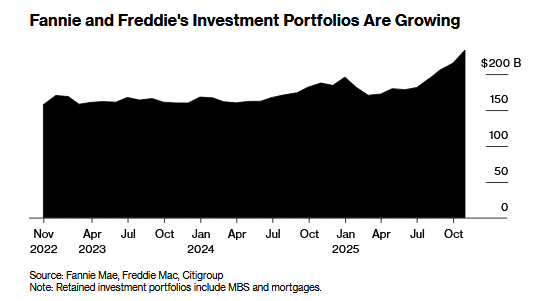Overview: Recent developments have spurred a euphoria that is exciting the animal spirits. Greater confidence that US inflation has peaked, and new initiatives from China, and yesterday’s Biden-Xi meeting are all feeding this narrative. The dollar, which slumped last week, is sliding anew today. Strategically, we anticipated the turn, but tactically, we thought last week’s move had stretched the near-term technical condition. The dollar is sharply lower (~-1%) against half of the G10 currencies and weaker against most emerging market currencies. Australian equities bucked the regional trend that saw the large Asia Pacific bourses rally, led by Hong Kong’s 4.1% gain. Europe’s Stoxx 600 is struggling to extend its rally into a fourth session, while US equity futures are extending yesterday’s gains. Most European benchmark yields are off 5-7 bp, though Italian yields are off around 10 bp. The 10-year US Treasury yield is about five basis points lower at 3.80%. Lower yields and a softer dollar are helping gold extend its recent gains to almost $1785 before consolidating in the European morning. December WTI got down to around $85.80 before steadying. US natgas is up 2.2% while Europe’s benchmark has jumped almost 9% after yesterdays 20% rally. Iron ore consolidated yesterday’s 2.5% advance. December copper is flattish after yesterday’s 2.0% rally pared last week’s nearly 6.2% surge. December wheat is off 1.3% to give back most of the gains of the past two sessions.
Asia Pacific
There is poor economic news from Japan and China. Unexpectedly, the Japanese economy contracted in Q3. It is as if economists got the sign wrong. Instead of growing by 1.2% as the median forecast had it, the world's third-largest economy contracted by as much. Private consumption slowed to 0.3% (quarter-over-quarter) from 1.2%, but this was anticipated by economists. Capital spending, which is often subject to revision, rose 1.5% in Q3 instead of 2.2%. The drag from next exports (-0.7%) was more than twice what was expected (-0.3%). And inventories fell 0.1% instead of being flat. The GDP deflator showed that the general price level fell by 0.5%, slightly less than expected. In October, the Japanese government announced a stimulus package worth roughly $260 bln.
China reported a smaller-than-expected year-over-year rise in industrial production (5.0% rather than 5.3%), and retail sales unexpectedly fell 0.5%. It had been projected to rise by 0.7% year-over-year. Fixed investment missed the 5.9% pace slightly (5.8%). Property divestment accelerated more than predicted. It had contracted by 8.0% year-over-year in September and had been expected to fall by 8.3%. Instead, it is 8.8% lower year-over-year. The survey joblessness rate was steady at 5.5%. Separately, the PBOC kept its benchmark one-year Medium-Term Lending Facility rate steady at 2.75%. It increased the lending volume by CNY850 bln (from CNY500 bln), but was a bit less than expected as the central bank used other facilities to inject more liquidity into the banking system to help ease the CNY1 trillion repayments due this month,
The dollar's bounce from the pre-weekend low near JPY138.50 ran out of steam yesterday around JPY140.80. It has not been JPY140.65 today and has spent most of the session so far above JPY139.60. However, it took another leg lower in Europe to about JPY139.20. There it may be closer to JPY138.80 before the pre-weekend low is revisited. The minutes from this month's Reserve Bank of Australia meeting did not shed new light on the trajectory of policy, except acknowledge that going forward, forward guidance will be less unequivocal. The Australian dollar surged to its best level in nearly two months (~$0.6770) and is still bid in through the European morning. Its rally from last month's low (~$0.6170) met the (38.2%) retracement of this year's losses around $0.6740. The next important chart area is the high from September near $0.6915, which also corresponds to the (50%) retracement of this year's decline. Initial support is likely around $0.6720. The Chinese yuan enjoys a firmer tone, but mostly was confined to yesterday's range. The dollar held above CNY7.0250. For the second consecutive session, the PBOC set the dollar's reference rate close to market projections (CNY7.0421 vs. CNY7.0433).
Europe
Most of the central banks that engaged in quantitative easing bought bonds. As they unwind their balance sheets, the main tool is limiting the amount of maturing proceeds that are reinvested, thereby allowing the balance sheet to shrink. In addition to bond purchases, the European Central Bank also made long-term loans at attractive rates, which at their best, assuming some lending targets were achieved, were at minus 100 bp. Fast forward, and these are simply too expensive for the ECB to maintain, and so they modified the terms. Banks have until tomorrow to inform officials their intentions to repay the loans early. It is not clear what and how much will be repaid, though German and French banks are thought to be eager to repay. Market estimates are quite wide, ranging from around 200 bln to 1.5 trillion euros of the roughly 2.1 trillion outstanding. The amount repaid will reduce the ECB's balance sheet by the same amount. This may not be fully appreciated by those waiting for the ECB to give clearer guidance into its plans to reduce its balance sheet, or to those who have been critical of the ECB for lagging behind other central banks in these efforts.
The UK's labor market is weaker than expected but wages grew a bit faster. The International Labour Organization's measure of unemployment edged up to 3.6% from 3.5% as more people left the labor force. At the same time, more people were hired (74k) in October and the September job growth was revised to 94k from 69k. Those making new unemployment claims also rose by 3.3K after a revised 3.9k increase in September. Average weekly earnings excluding bonuses are 5.7% in the three-months through September from a year ago, accelerating from 5.4%. The focus shifts now to tomorrow's inflation report and Thursday's budget. It looks the Sunak government will be borrowing almost as much as the Truss/Kwarteng had projected (~5% less).
OPEC+'s decision to cut output was widely criticized by the US, whose officials think were misled. Some OPEC+ officials saw the US request as being influenced by the midterm elections. OPEC reduced its projections for global demand again ahead of next month's meeting (December 4). For the second consecutive month, it cut the anticipated demand by a little more than 500k barrels a day. OPEC's monthly report sees demand bouncing back in the first quarter of 2023, partly as a function of seasonal considerations. Despite some volatility, the price of December WTI has moved broadly sideways as reflected by the convergence of the 50-, 100- and 200-day moving averages between roughly $85.50 and $90.50. Similarly, the January 2023 Brent oil contract moving averages have converged between a little less than $91 to almost $95. Today's IEA report is sanguine. It warned that government and private sector oil inventories are below 4 bln barrels for the first time in 18 years. This is a loss of 177 mln barrels this year. It sees the market more finely balanced and called on OPEC, the oil cartel, to reconsider its output cuts. That said, it sees a 240k barrel a day reduction in demand this quarter.
After stalling ahead of the weekend and yesterday near $1.0365, the euro has pushed to almost $1.0420 today, perhaps helped on the margin by a less bad German ZEW survey. The 200-day moving average, which it has not traded above since June 2021, is found near $1.0435 today. The (50%) retracement of this year's losses is found closer to $1.0515. The intraday momentum indicators are stretched but the positioning adjustment is powerful. Initial support now may be around $1.0380. Sterling is almost a cent firmer but has held just below yesterday's high slightly above $1.1870. We had targeted $1.20 with the break of $1.1750 but note that the $1.2050 area corresponds to the (50%) retracement of this year's losses. The $1.1800 area may offer the first support.
America
There are two spreads in the Fed funds futures that we continue to monitor. The first is the spread between next year's March and June contracts. This is helpful in seeing when the market is pricing in the terminal rate. It has vacillated between Q1 and Q2. November 3rd, the day after the Fed met, the implied yield of the June contract was 23 bp higher than the March contract, indicating that the lion's share of a 25 bp hike was expected in Q2. The market has had second thoughts and it is around 14 bp now. Still leaning strongly, but not strongly. The second spread we are monitoring is between the September and December contracts. The implied yield of the December contract is 25 bp below the September contract. This spread reflects strong expectations that the Federal Reserve will cut the target rate in Q4 next year.
The US reports October producer prices today. It tracks the prices received by US domestic producers. They are important for businesses and economists but less so for the market and Fed policy. Some observers have this quaint idea about prices, that they first rise to producers and then get passed on to consumers--a pipeline theory of prices, if you will. If a store sees that the costs of future goods are rising, will the owners not mark-up their current inventory to reflect it? Businesses seem more efficient than the pipeline theory suggests for most goods. Yet, remember many of the goods we buy are not raw material or commodity intensive. Sure, pots and pans are. The commodities of internal combustion engine cars may account for around half the manufacturing costs and EVs a bit more. However, the price of a computer, cell phones, televisions, and smart appliances have very little to do with the price of the raw materials. The correlation between monthly changes in consumer and producer prices, even allowing for various lags is not particularly robust. Although there is a small overlap (producer prices for consumer goods), the baskets are very different. The takeaway is do not expect a significant market reaction to today's report.
Canada's manufacturing and wholesale sales figures are for September. They might help economists fine tune September and Q3 GDP figures, but the impact on the market is likely minimal. After growing more than 3% (annualized rate) for the past four quarters, the Canadian economy has downshifted. The median forecast in Bloomberg's survey is for 1% growth in Q3 (due November 29). Starting with the fourth quarter, economists do not see growth coming close to 1% again until late next year. The market may be more sensitive to tomorrow's data. It includes existing home sales, which have declined for seven months through September. Canada also reports October CPI figures. The median forecast in Bloomberg's survey sees a 0.8% increase, which given last October’s 0.7% rise, suggests the headline year-over-year rate may edge up to 7.0% from 6.9%. The underlying measures, which the central bank puts more weight on, may rise slightly on average. The swaps market leans toward a 25 bp hike by the Bank of Canada when it meets next on December 7. There is about a 37% chance a 50 bp hike discounted.
The US dollar briefly traded above yesterday's high (~CAD1.3315) in Asia but has come off to approach yesterday's low (~CAD1.3240). The Canadian dollar often seems to lag the other major currencies in a softer US dollar environment. After breaking the neckline of a head and shoulders pattern we have been monitoring at CAD1.35, the greenback has consolidated around halfway to the measuring target near CAD1.30. A convincing break of the CAD1.32 area suggest it is on its way to the target. After sliding 0.8% against the Mexican peso yesterday to give back the lion's share of its pre-weekend gains, the greenback is practically flat today. We suspect the issue is still some pressure from unwinding carry trades, but some may link it to Banxico's Deputy Governor suggesting that its monetary policy can decouple from Fed policy. That said, the central bank's next meeting on December 15 is a day after the Fed's meeting concludes and is expected to deliver a 50 bp hike. We see initial resistance near MXN19.40 and support around MXN19.25. Lastly, we note that in Brazil, the new government, which is not in place yet, is considering modifying some of its fiscal ambitions that had been initially floated.
Full story here Are you the author? Previous post See more for Next post
Tags: #USD,Canada,China,Currency Movement,ECB,Featured,federal-reserve,Japan,newsletter,OIL,U.K.


































